Wolves of War: Unleashing the Untamed Fury in Battle
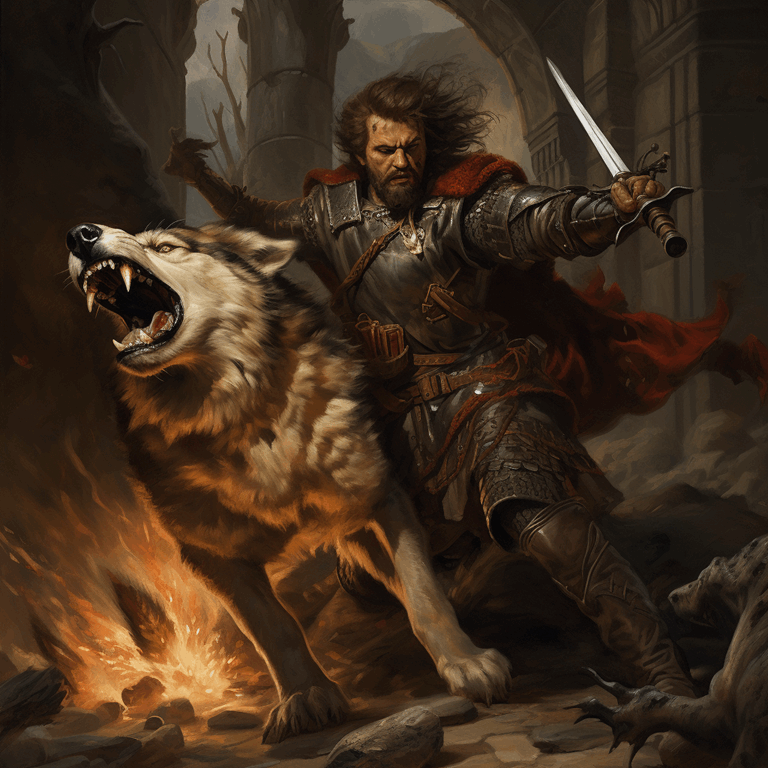
In the realm of warfare, tales of unconventional strategies and extraordinary weapons have always captivated our imagination. Among these intriguing stories lies the remarkable concept of wolves being employed in war. Wolves, feared and revered throughout history, have been harnessed as powerful assets on the battlefield. Their ferocity, agility, and instinctual prowess have made them formidable allies, capable of instilling fear in the hearts of enemies. As we explore the historical accounts and cultural significance surrounding the utilization of war wolves, we delve into a fascinating chapter of military history that blurs the line between nature and warfare, revealing the remarkable interplay between human ingenuity and the primal forces of the animal kingdom.
The cultural associations of wolves with war and warriors trace back to ancient times, spanning across various civilizations and mythologies. In Norse mythology, the wolf Fenrir symbolized chaos and destruction, ultimately playing a pivotal role in the events leading to Ragnarök, the apocalyptic battle. The ancient Greeks revered the wolf as a symbol of courage and ferocity, exemplified by the mythological figure of Lycaon, who was transformed into a wolf as punishment for his wickedness. The Roman Empire also embraced the image of the wolf, with the legendary founding story of Romulus and Remus being nurtured by a she-wolf. Additionally, Celtic mythology featured tales of warriors assuming the form of wolves, embodying their relentless spirit and predatory nature. These cultural connections between wolves and war reflect the symbolic power attributed to these majestic creatures and the awe-inspiring qualities they were believed to possess.
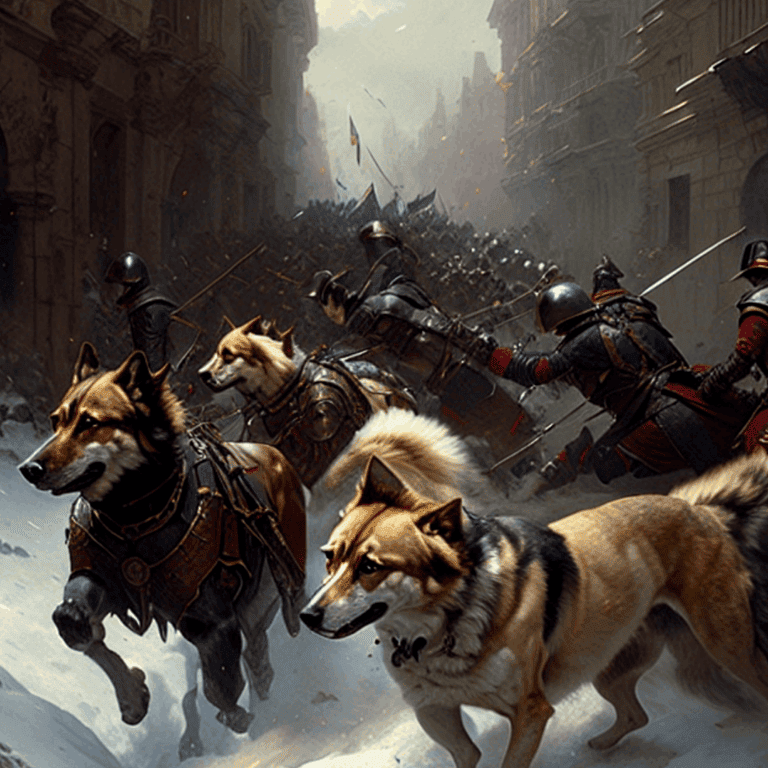
Ancient civilizations such as the Greeks, Romans, and Celts embraced the idea of harnessing the power of wolves in warfare. In ancient Greece, Spartan warriors revered the wolf as a symbol of courage and fierce loyalty. Plutarch, a Greek historian, chronicled an incident where Spartan soldiers, known as “Krypteia,” donned wolf skins to instill fear in their enemies during night raids.
The Roman army also employed war dogs, which may have included wolf hybrids, for their keen senses and ferociousness on the battlefield. The Celts, renowned for their warrior culture, believed that transforming into wolves in battle would grant them heightened strength and bravery. These ancient civilizations recognized the primal qualities of wolves and sought to channel their prowess into military exploits, showcasing their belief in the formidable synergy between humans and these magnificent creatures.

The Mongols and their war dogs
The Mongols, renowned for their conquests and military prowess, also utilized war dogs in their campaigns. While specific documentation is scarce, historical accounts suggest that the Mongols employed war dogs, which potentially included wolf hybrids, to bolster their forces. These war dogs were trained to operate alongside the Mongol cavalry, serving as fierce and loyal companions on the battlefield. Their heightened senses and instinctual abilities made them invaluable for scouting, detection of enemy forces, and even attacking adversaries. The presence of war dogs in Mongol warfare added an element of surprise and intimidation, as the enemy had to contend not only with the formidable Mongol warriors but also with these fierce canine allies. The Mongols’ utilization of war dogs exemplifies their innovative and adaptive approach to warfare, harnessing the unique abilities of animals to gain an edge in battle.
The Teutonic Knights’ use of armoured war wolves
The Teutonic Knights were a crusading military order in medieval times, raiding countries to convert them to Catholicism. The alleged use of trained war wolves by the Teutonic Knights during their medieval conquests in Eastern Europe has been the subject of speculation and folklore. While concrete historical evidence is limited, several accounts and legends suggest their involvement in employing these fearsome creatures as weapons of war. One notable mention comes from the chronicle of Peter of Dusburg, a 14th-century chronicler who documented the history of the Teutonic Order. According to his account, the Teutonic Knights deployed trained wolves in their battles against the pagans in Prussia. These war wolves were purportedly outfitted with protective armor and unleashed upon the enemy ranks, causing chaos and disarray. However, it is essential to approach these accounts with caution, as historical records from that era often blend fact and fiction. While the precise extent and methods of the Teutonic Knights’ alleged use of war wolves remain uncertain, the legends surrounding their exploits serve as a testament to the enduring fascination with the intersection of warfare and the animal kingdom in medieval times.
Training and Domestication of War Wolves
A. Capturing and rearing wolf cubs for training purposes
Capturing and rearing wolf cubs formed a crucial step in the training and domestication of war wolves. The process typically involved locating wolf dens or breeding grounds and carefully extracting the young cubs. Experienced trainers, often skilled in handling wild animals, were responsible for raising and imprinting the wolf cubs with a sense of human companionship. This early socialization aimed to establish a bond of trust between the trainers and the wolves. Feeding, grooming, and providing a nurturing environment were essential aspects of the rearing process to ensure the cubs’ physical and emotional development. By capturing and raising wolf cubs, military forces sought to establish a foundation for their future roles as trained war wolves, capitalizing on the creatures’ natural instincts and pack mentality.
Gradual exposure to battlefield conditions and commands
Gradual exposure to battlefield conditions and commands played a pivotal role in the training of war wolves, ensuring their readiness and adaptability in the chaos of warfare. Once the wolf cubs reached an appropriate age, trainers would expose them to controlled environments that simulated the sights, sounds, and sensations of the battlefield. This gradual introduction allowed the wolves to acclimate to the unfamiliar and potentially overwhelming stimuli they would encounter during combat. Trainers would issue commands and signals, teaching the wolves to respond to specific cues, such as attacking on command or retreating from danger. Through consistent reinforcement and positive conditioning, the war wolves learned to associate certain commands with desired actions. Additionally, trainers would strategically expose the wolves to battle scenarios, gradually increasing the complexity and intensity of the training exercises. This process of gradual exposure allowed the war wolves to develop the necessary instincts, discipline, and obedience required for effective combat engagement. The gradual transition from controlled training environments to realistic battlefield simulations ensured that the war wolves could perform under the duress and unpredictability of actual warfare.
Psychological Impact and Tactical Advantages
Fear and intimidation caused by the presence of war wolves
The presence of war wolves on the battlefield instilled fear and intimidation in the hearts of enemies, creating a psychological advantage for the forces employing them. The natural reputation of wolves as fierce and predatory animals, coupled with their imposing size and ferocious demeanour, made them formidable and awe-inspiring adversaries. The mere sight of these trained beasts charging alongside soldiers could strike terror into the hearts of opposing forces, causing panic and disrupting their morale. The element of unpredictability added to the psychological impact, as enemies were uncertain of the wolves’ targets or their next move. This fear and intimidation often led to a breakdown in enemy formations, making it easier for the allied forces to exploit weaknesses and gain a strategic upper hand. The psychological impact of war wolves extended beyond the immediate battlefield, as tales and rumours of their presence could spread, further augmenting their reputation and the psychological advantage held by their handlers.
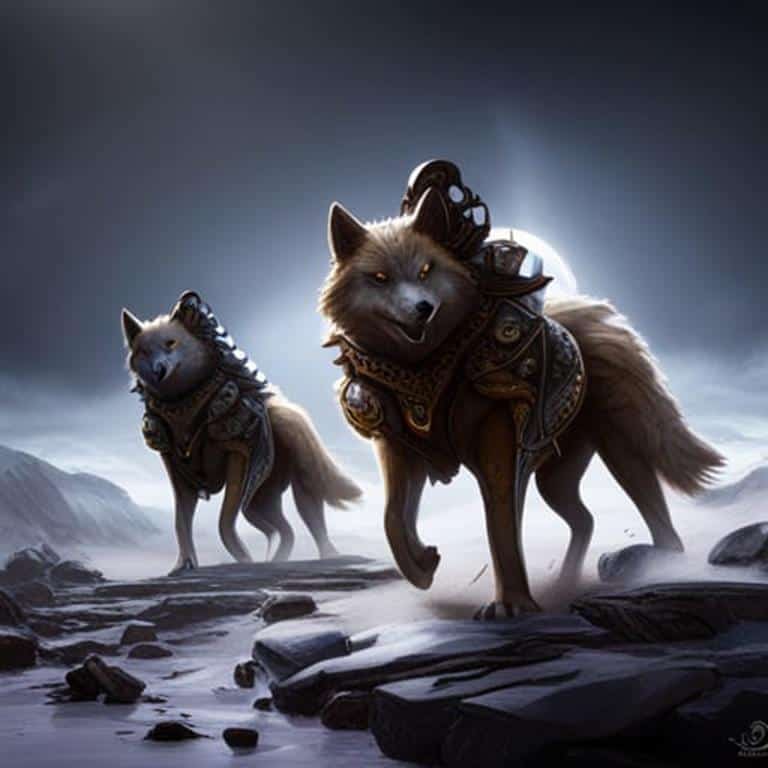
Disruption of enemy lines and formations
One notable example of war wolves disrupting enemy lines and formations can be found in the Battle of Orléans during the Hundred Years’ War. In 1429, Joan of Arc, leading the French forces, employed a tactic known as “loup de guerre” or “wolf attack.” While the exact nature of the “wolf attack” is debated among historians, it involved the strategic release of wolves or dogs into the English ranks, causing disorder and panic. The psychological impact of these unleashed animals disrupted the cohesion of the English forces and contributed to their ultimate defeat.
Another historical account comes from the Battle of Kressenbrunn in 1260, during the Mongol invasion of Europe. The Mongols, known for their skilled horsemanship and military tactics, utilized a combination of war dogs and possibly wolf hybrids to break the enemy lines. The unleashed war dogs, often accompanied by riders, charged into the enemy ranks, causing confusion, disruption, and instilling fear among the opposing forces. The disruption caused by these trained canines played a crucial role in the Mongols’ success on the battlefield.
While specific details and named examples of war wolves in battles are limited due to the scarcity of historical records, these instances provide glimpses into the effectiveness of using trained animals to disrupt enemy lines and formations. The historical accounts reinforce the notion that the presence of war wolves had a tangible impact on the outcome of battles, exploiting the instinctual fear and vulnerability of human adversaries when confronted with fierce and relentless predators.
Targeting vulnerable soldiers
War wolves were particularly adept at targeting vulnerable enemy soldiers and disrupting cavalry units on the battlefield. These trained animals possessed a keen sense of instinct and were strategically deployed to exploit weaknesses in the enemy’s defenses. When confronted with a formation of soldiers, war wolves would instinctively seek out targets that were more exposed or less protected, such as archers, support troops, or those at the periphery of the enemy lines. Their speed and agility allowed them to swiftly navigate through the chaos of battle and single out these vulnerable individuals, creating havoc and confusion within the enemy ranks.
In addition to targeting infantry, war wolves were also effective in disrupting cavalry units. Cavalry units relied on speed, coordination, and the shock value of their charges to break enemy lines. However, the presence of war wolves introduced an element of fear and unpredictability. As the wolves charged alongside the allied forces, they would deliberately target horses, seeking to disrupt the cohesion and momentum of the cavalry charges. The instinctual threat posed by these ferocious predators could cause horses to panic, throw their riders, or veer off course, ultimately disorienting the entire cavalry unit. By targeting the mounts and destabilizing the cavalry formations, war wolves played a significant role in neutralizing one of the most formidable elements of an enemy’s fighting force.
The ability of war wolves to target vulnerable soldiers and disrupt cavalry units provided a tactical advantage for the forces employing them. By exploiting weaknesses in the enemy’s defences and creating chaos within their ranks, war wolves effectively contributed to the breakdown of enemy formations, enabling allied forces to exploit openings, gain the upper hand, and secure victory on the battlefield.
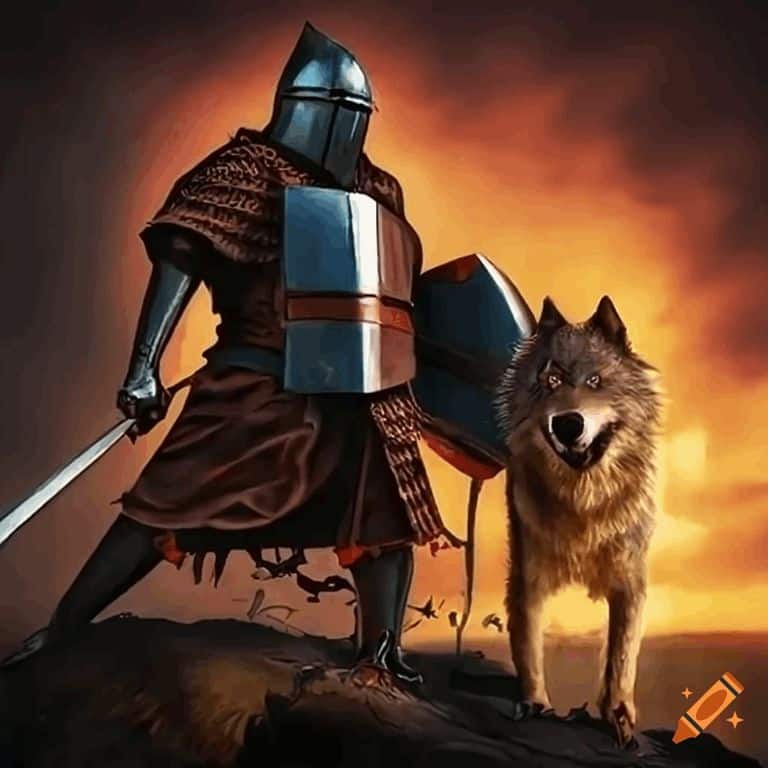
Equipment and Defensive Measures
Armor and spiked collars to enhance the wolves’ defensive capabilities
To enhance the defensive capabilities of war wolves, meticulous attention was given to outfitting them with specialized armor and spiked collars. The armor crafted for war wolves was a carefully designed combination of durability and flexibility. It consisted of lightweight yet resilient materials such as leather or metal plates that were strategically placed to protect vital areas without impeding the wolves’ agility and movement on the battlefield. The armor typically covered the neck, chest, and sides, shielding these vulnerable regions from enemy strikes and reducing the risk of fatal injuries.
The spiked collars worn by war wolves served multiple purposes. Not only did they provide an added layer of protection, but they also acted as a deterrent to anyone attempting to grab or immobilize the wolves. The collars were adorned with sharp spikes that projected outward, making it difficult for adversaries to gain a firm grip on the wolves in close-quarters combat. The spikes served as a formidable defense mechanism, inflicting injury on those who dared to engage the war wolves directly. Furthermore, the sight of these menacing spiked collars added to the psychological impact, instilling fear and apprehension in enemy combatants who faced the prospect of tangling with these formidable creatures.
The use of armour and spiked collars not only enhanced the war wolves’ defensive capabilities but also served as a means of safeguarding the investment made in their training and maintenance. These defensive measures aimed to increase the survival rate of war wolves during engagements, preserving their effectiveness on the battlefield. Handlers recognized the value of protecting these valuable assets, ensuring that the wolves could withstand enemy attacks and fulfill their role in disrupting enemy formations and striking fear into the hearts of adversaries.
By equipping war wolves with specialized armour and spiked collars, handlers demonstrated their commitment to maximizing the defensive capabilities of these fearsome creatures. The combination of protective gear and natural predatory instincts created a formidable force that could withstand enemy assaults, contributing to the overall success of military operations. The careful attention given to equipping war wolves with defensive equipment underscores the significance placed on their role as formidable assets in warfare, adding an extra layer of complexity to the interplay between nature and the art of war.
Methods used to protect the trainers and manage the wolves’ aggression
The protection of trainers and the management of wolves’ aggression were vital aspects of working with war wolves. Handlers employed various methods to ensure their safety and effectively control the aggressive tendencies of these powerful animals.
One method used was the establishment of a strong bond between trainers and the war wolves through consistent and positive reinforcement. Trainers spent considerable time developing a rapport with the wolves, building trust and establishing themselves as the dominant figures in the pack hierarchy. This bond formed the foundation for effective communication and obedience, allowing trainers to manage the wolves’ aggression by issuing commands and redirecting their focus during intense situations.
Another technique involved the use of specialized training techniques and conditioning exercises. Trainers utilized reward-based training, employing treats, praise, and other positive reinforcements to encourage desired behaviors and discourage aggressive tendencies. Through consistent and repetitive training sessions, war wolves learned to associate certain actions with rewards, reinforcing their obedience and diminishing their inclination toward aggression.
Physical management tools were also employed to control the wolves when necessary. Strong leashes, harnesses, and muzzles were utilized during training and deployment to provide trainers with increased control over the wolves’ movements and to prevent potential aggression toward handlers or other individuals on the battlefield. These tools allowed trainers to quickly and safely intervene in situations where the wolves’ aggression needed to be managed or redirected.
Additionally, the strategic placement of barriers and enclosures played a crucial role in protecting trainers and managing the wolves’ aggression. Securely constructed enclosures provided a safe space for the wolves to rest and recover between training sessions or during periods of heightened aggression. These enclosures not only protected the trainers but also served as a means of managing the wolves’ energy and ensuring controlled interactions with other personnel.
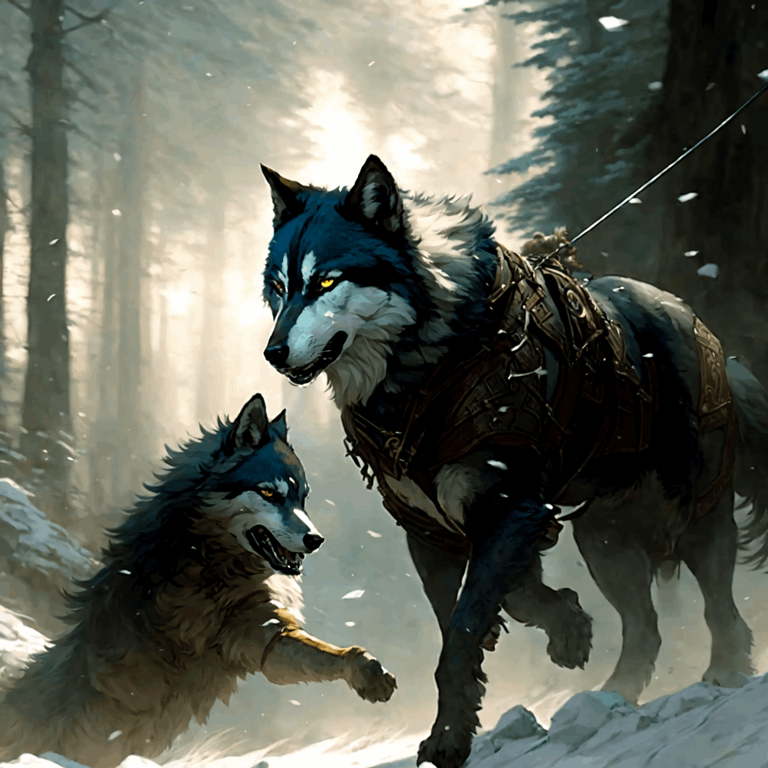
Overall, the protection of trainers and the management of wolves’ aggression relied on a combination of trust-building, positive reinforcement, training techniques, physical management tools, and the strategic use of enclosures. By employing these methods, handlers minimized the risks associated with working alongside powerful and potentially aggressive animals, enabling them to effectively harness the wolves’ capabilities while maintaining the safety and well-being of all involved parties.
Interpretations of historical references and their implications
The historical accounts and documented examples of war wolves are often hindered by limitations and a scarcity of detailed records. The passage of time has resulted in a dearth of specific information on their training, deployment, and outcomes in battles. Biases, inconsistencies, and the loss of historical records further complicate the quest for a comprehensive understanding. Nevertheless, fragmentary accounts provide intriguing glimpses into the strategic use of war wolves, showcasing their potential advantages on the battlefield. Despite the challenges, these fragments contribute to the captivating narrative surrounding the interplay between nature and warfare.
Decline and Obsolescence
Advancements in weaponry
The decline and obsolescence of war wolves can be attributed to advancements in weaponry and the changing nature of warfare. As technology progressed and new weapons emerged, traditional methods of using animals in combat became less effective. The development of long-range weapons such as firearms, artillery, and explosives shifted the dynamics of warfare towards more distant and indiscriminate forms of engagement. These advancements allowed armies to engage their enemies from greater distances, reducing the effectiveness of close-quarters tactics employed by war wolves.
Furthermore, the evolving tactics and strategies employed in modern warfare rendered the use of war wolves impractical. The shift towards organized, disciplined armies equipped with firearms and supported by advanced logistics systems made the employment of animal-based units less viable. The increasing emphasis on maneuverability, combined arms tactics, and the need for rapid and coordinated movements on the battlefield favored human soldiers and specialized military equipment over the utilization of animals.
Challenges and risks associated with training and maintaining war wolves
Training and maintaining war wolves presented significant challenges and risks. Handling powerful and predatory animals required expertise and caution. Gradually exposing them to battlefield conditions while ensuring safety was a delicate balance. Managing their aggression and preventing friendly fire demanded constant vigilance. The physical demands and unpredictable nature of war wolves increased the risks for trainers. Injuries and fatalities during training or combat exemplified the inherent dangers.
Comparison to Other Animal-Based Warfare Tactics
In contrast to other historical examples of animal use in warfare, war wolves offered a distinct and formidable approach to combat. While other animals such as elephants, horses, and war dogs were employed in warfare, war wolves stood out due to their unique combination of predatory instincts, fear-inducing presence, and adaptability to various terrains. Unlike elephants or horses, war wolves possessed natural aggression and an ability to strike fear into the hearts of enemies, making them formidable psychological weapons. War dogs, on the other hand, were primarily used for their heightened senses and loyalty, whereas war wolves brought a more predatory and disruptive element to the battlefield. The concept of war wolves challenged traditional animal-based warfare tactics by harnessing the untamed power of nature itself, creating a fearsome force that posed distinct advantages and set them apart from other animal counterparts.
Comparing different war animals
Different animal-based tactics in warfare have varied in terms of their effectiveness and practicality.
Elephants for size and intimidation
Elephants, for example, were employed by ancient armies as mobile platforms, often carrying archers or spear-throwers. Their sheer size and strength made them intimidating to enemy forces, capable of trampling infantry and breaking through enemy lines. However, elephants were vulnerable to various countermeasures, such as scaring them with loud noises, targeting their mahouts (handlers), or inflicting wounds on their legs.
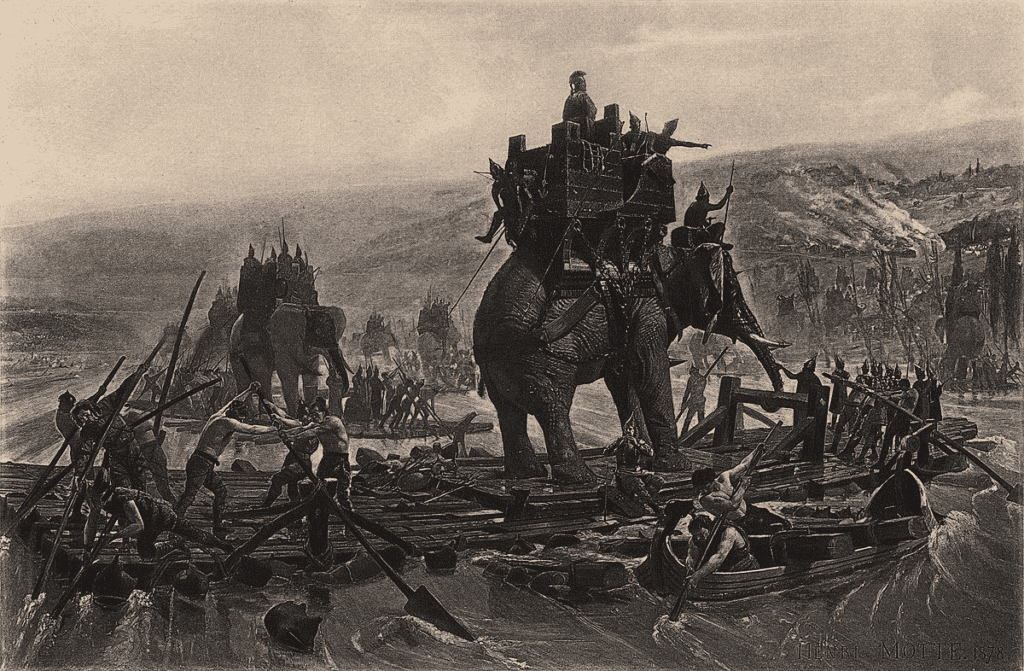
Horses for speed
Horses have been widely utilized throughout history for their speed, maneuverability, and ability to carry mounted warriors. Cavalry units played a crucial role in many battles, enabling swift attacks, flanking manoeuvres, and reconnaissance. Horses offered greater mobility on the battlefield, but their effectiveness relied heavily on skilled riders and the overall strategy employed. They were also susceptible to projectiles, traps, and the presence of disciplined infantry formations.
War dogs for enemy detection
War dogs were trained for various purposes, including scouting, guarding, and attacking enemy soldiers. Their acute senses and loyalty made them valuable assets on the battlefield. Dogs were particularly effective in detecting ambushes, tracking enemies, and disrupting enemy formations. However, their small size and vulnerability to ranged weapons limited their role in direct combat. They were often deployed in conjunction with human soldiers, acting as companions and offering additional protection.
War wolves for fear and chaos
In contrast, war wolves introduced a different dimension to animal-based warfare tactics. Their natural predatory instincts and ability to strike fear into the enemy ranks provided a unique psychological advantage. War wolves disrupted enemy formations, targeted vulnerable soldiers, and created chaos on the battlefield. Their effectiveness relied on their training, handling, and the ability of the trainers to maintain control over their aggression. However, the practicality of utilizing war wolves declined with advancements in weaponry, changes in tactics, and evolving ethical considerations.
Modern military applications that draw inspiration from animal behaviour and tactics
Biomimicry
In modern times, military applications have increasingly drawn inspiration from animal behavior and tactics, leading to innovative approaches in warfare. The field of biomimicry explores how animals adapt and excel in their environments, inspiring the development of technologies and strategies. For instance, unmanned aerial vehicles (UAVs), often referred to as drones, have been designed to mimic the flight patterns and agility of birds. These drones provide surveillance, reconnaissance, and targeted strikes, emulating the predatory nature of birds of prey. Similarly, the concept of swarm intelligence, inspired by the coordinated behaviour of insects like ants and bees, has influenced the development of autonomous robotic systems. These systems can collaborate, communicate, and adapt dynamically, enabling enhanced decision-making and mission efficiency. By studying and emulating nature’s strategies, modern military applications have sought to gain a tactical edge and maximize operational effectiveness.
Cyber Wolves
Analogies to contemporary warfare can be found in the concept of “cyber wolves,” drawing parallels between the predatory nature of wolves and the evolving landscape of cyber warfare. In the digital realm, cyber wolves symbolize highly skilled and sophisticated cyber attackers who possess advanced capabilities, adaptability, and the ability to strike with precision. These “wolves” operate in the shadows, utilizing stealth, intelligence, and speed to infiltrate and exploit targets. Just as wolves target vulnerable prey, cyber wolves target weaknesses in digital systems, networks, and infrastructures. They employ tactics such as phishing, malware attacks, and social engineering to gain unauthorized access, steal valuable information, or disrupt critical operations. The analogy of cyber wolves serves as a reminder of the ever-present threat in the cyber domain and the need for robust defensive measures, intelligence gathering, and proactive cybersecurity strategies to mitigate the risks posed by these virtual predators.
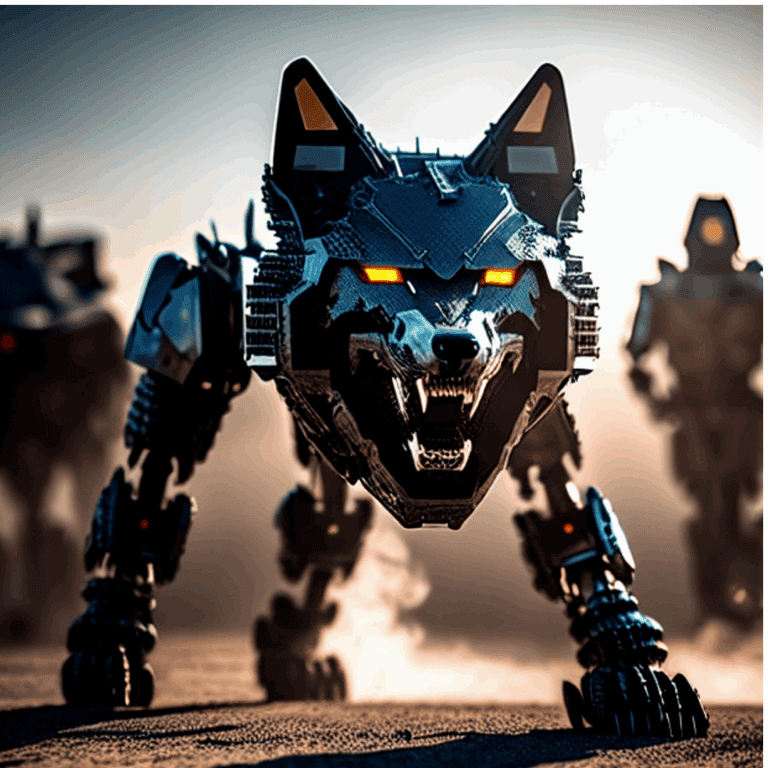
The Future of Warfare: AI-enhanced robot animals and genetically engineered war animals?
Examining the potential future developments and implications of animal-inspired warfare tactics opens up intriguing possibilities. As technology continues to advance, the integration of artificial intelligence (AI) and robotics could lead to the creation of highly advanced robotic animals capable of autonomously operating on the battlefield. These robotic counterparts, inspired by the agility, strength, and instincts of animals, could potentially revolutionize warfare by offering enhanced reconnaissance, surveillance, and even combat capabilities. Additionally, the field of bioengineering holds promise for the creation of genetically modified animals with enhanced physical attributes or specialized abilities tailored for military applications.






